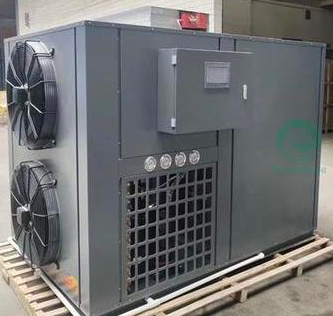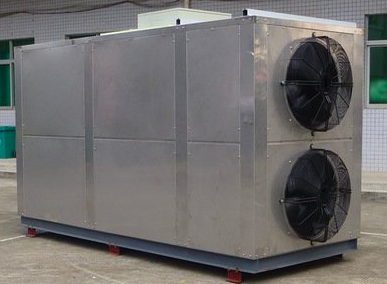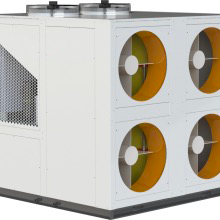
Content Menu
● Introduction
● Understanding Heat Pump Dryer Technology
>> How Heat Pump Dryers Work
● Energy Consumption Comparison: Heat Pump vs Conventional Dryers
>> Quantifying Energy Savings
>> Real-World Performance
● Factors Influencing Heat Pump Dryer Electricity Usage
● Energy Savings and Cost-Effectiveness
>> Calculating Long-Term Savings
● Environmental Impact of Heat Pump Dryers
>> Carbon Footprint Reduction
● Advancements in Heat Pump Dryer Technology
>> Smart Features and Connectivity
>> Hybrid Technologies
● Heat Pump Dryer Capacity and Energy Use
>> Optimizing Load Sizes
● Performance Metrics for Heat Pump Dryers
● Conclusion
● Frequently Asked Questions
>> 1. How much energy does a heat pump dryer typically save compared to a conventional dryer?
>> 2. Are heat pump dryers worth the higher initial cost?
>> 3. Do heat pump dryers take longer to dry clothes than conventional dryers?
>> 4. How does the capacity of a heat pump dryer affect its energy efficiency?
>> 5. What maintenance is required to keep a heat pump dryer operating efficiently?
Introduction
In an era where energy efficiency and environmental consciousness are at the forefront of consumer concerns, heat pump dryers have emerged as a game-changing technology in the world of laundry appliances. These innovative machines are reshaping our understanding of energy consumption in household chores, offering a promising solution to reduce both electricity bills and carbon footprints. This comprehensive guide delves into the intricacies of heat pump dryers, exploring their energy efficiency, performance, and long-term benefits for both consumers and the environment.
Understanding Heat Pump Dryer Technology
Heat pump dryers represent a significant leap forward in drying technology. Unlike conventional dryers that expel hot, moist air, heat pump dryers operate on a closed-loop system that recirculates air, extracting moisture and reusing heat energy. This innovative approach results in substantially lower energy consumption compared to traditional vented or condenser dryers.
How Heat Pump Dryers Work
The operation of a heat pump dryer involves several key steps:
1. Air circulation: Warm air is circulated through the drum, absorbing moisture from the clothes.
2. Heat exchange: The warm, moist air passes through an evaporator, which cools the air and condenses the moisture.
3. Reheating: The cooled, dry air is then reheated by a condenser and recirculated back into the drum.
4. Moisture collection: Condensed water is collected in a tank or drained directly.
This closed-loop system allows heat pump dryers to operate at lower temperatures while still effectively drying clothes, contributing to their energy efficiency and gentler treatment of fabrics.

Energy Consumption Comparison: Heat Pump vs Conventional Dryers
One of the most compelling aspects of heat pump dryers is their significantly lower energy consumption compared to conventional models. Studies and real-world usage data consistently demonstrate the superior efficiency of heat pump technology in clothes drying.
Quantifying Energy Savings
Research indicates that heat pump dryers typically use 40-50% less energy than traditional North American dryers to dry the same amount of laundry. This substantial reduction in energy use translates to noticeable savings on electricity bills and a smaller environmental impact.
Real-World Performance
In practical terms, while a conventional dryer might consume around 3-4 kilowatt-hours (kWh) per load, a heat pump dryer can accomplish the same task using only 1.5-2 kWh. Over the course of a year, with multiple loads per week, these savings can add up to a significant reduction in energy consumption and cost.
Factors Influencing Heat Pump Dryer Electricity Usage
While heat pump dryers are inherently more efficient than their conventional counterparts, several factors can influence their actual electricity usage:
1. Dryer capacity: Larger capacity models may use more energy per cycle but can be more efficient for bigger loads.
2. Load size: Running the dryer with full loads optimizes energy efficiency.
3. Moisture content: Wetter clothes require more energy to dry completely.
4. Maintenance: Regular cleaning of filters and heat exchangers ensures optimal performance.
5. Program selection: Using appropriate drying programs for different fabric types can maximize efficiency.
Understanding these factors can help users optimize their dryer's performance and further reduce energy consumption.
Energy Savings and Cost-Effectiveness
The energy savings offered by heat pump dryers directly translate to cost savings for consumers. While the initial purchase price of a heat pump dryer is typically higher than that of a conventional model, the long-term savings on energy bills can offset this difference.
Calculating Long-Term Savings
To illustrate the potential savings, consider a household that does 5 loads of laundry per week:
- Conventional dryer: 3.5 kWh/load * 5 loads/week * 52 weeks = 910 kWh/year
- Heat pump dryer: 1.75 kWh/load * 5 loads/week * 52 weeks = 455 kWh/year
Assuming an electricity rate of $0.13 per kWh, this translates to annual savings of approximately $59. Over the typical 10-year lifespan of a dryer, total savings could exceed $590, not accounting for potential increases in electricity rates.

Environmental Impact of Heat Pump Dryers
Beyond personal cost savings, the reduced energy consumption of heat pump dryers has significant environmental benefits. By using less electricity, these appliances contribute to lower greenhouse gas emissions associated with power generation.
Carbon Footprint Reduction
The energy savings from heat pump dryers directly correlate to a reduction in carbon emissions. For example, if the average household can save 455 kWh per year by switching to a heat pump dryer, this could result in a reduction of approximately 320 pounds of CO2 emissions annually, based on the average U.S. electricity generation mix.
Advancements in Heat Pump Dryer Technology
As with any technology, heat pump dryers continue to evolve and improve. Recent advancements focus on enhancing energy efficiency, reducing drying times, and improving overall performance.
Smart Features and Connectivity
Many modern heat pump dryers now incorporate smart features that allow users to monitor and control their appliances remotely. These features can help optimize energy use by providing real-time feedback and allowing users to start or stop cycles at the most energy-efficient times.
Hybrid Technologies
Some manufacturers are exploring hybrid systems that combine heat pump technology with traditional heating elements. These systems aim to provide the energy efficiency of heat pumps with the faster drying times of conventional dryers, offering users the best of both worlds.
Heat Pump Dryer Capacity and Energy Use
One consideration when choosing a heat pump dryer is the relationship between capacity and energy use. While larger capacity dryers may use more energy per cycle, they can be more efficient for households with higher laundry volumes.
Optimizing Load Sizes
To maximize energy efficiency, it's important to match the dryer's capacity to your typical laundry loads. Running a large-capacity dryer with small loads can lead to unnecessary energy consumption, while overloading a smaller dryer may result in longer drying times and increased energy use.
Performance Metrics for Heat Pump Dryers
When evaluating heat pump dryers, several performance metrics are commonly used to assess their efficiency and effectiveness:
1. Energy Factor (EF): Measures the pounds of clothing dried per kilowatt-hour of electricity consumed.
2. Combined Energy Factor (CEF): Similar to EF but also accounts for standby and off-mode power consumption.
3. Specific Moisture Extraction Rate (SMER): Indicates the amount of water removed per unit of energy consumed.
These metrics provide valuable information for comparing different models and understanding their relative efficiency.
Conclusion
Heat pump dryers represent a significant advancement in laundry technology, offering substantial energy savings and environmental benefits. While the initial investment may be higher, the long-term cost savings and reduced environmental impact make them an attractive option for environmentally conscious consumers.
As technology continues to advance and energy efficiency becomes increasingly important, heat pump dryers are likely to play a growing role in household energy conservation efforts. By understanding the technology, performance metrics, and potential savings associated with these appliances, consumers can make informed decisions that benefit both their wallets and the planet.

Frequently Asked Questions
1. How much energy does a heat pump dryer typically save compared to a conventional dryer?
Answer: Heat pump dryers typically use 40-50% less energy than conventional dryers to dry the same amount of laundry. This can result in significant energy savings over time, potentially reducing electricity consumption by hundreds of kilowatt-hours per year for an average household.
2. Are heat pump dryers worth the higher initial cost?
Answer: While heat pump dryers generally have a higher upfront cost, they can be worth the investment for many households. The energy savings over the dryer's lifetime often offset the initial price difference. Additionally, they offer gentler drying for clothes and environmental benefits, which many consumers find valuable.
3. Do heat pump dryers take longer to dry clothes than conventional dryers?
Answer: Heat pump dryers typically have longer cycle times than conventional dryers due to their lower operating temperatures. However, advancements in technology are continually improving drying times. The trade-off is significantly reduced energy consumption and gentler treatment of fabrics.
4. How does the capacity of a heat pump dryer affect its energy efficiency?
Answer: The capacity of a heat pump dryer can influence its energy efficiency. Larger capacity models may use more energy per cycle but can be more efficient for bigger loads. It's important to choose a dryer size that matches your typical laundry volume to optimize energy use.
5. What maintenance is required to keep a heat pump dryer operating efficiently?
Answer: To maintain optimal efficiency, heat pump dryers require regular cleaning of lint filters and heat exchangers. Some models have self-cleaning condensers, which can reduce maintenance needs. It's also important to ensure proper ventilation around the dryer and to clean the moisture sensor periodically. Following the manufacturer's maintenance guidelines will help ensure long-term efficiency and performance.












